
Uzbekistan, officially the Republic of Uzbekistan, is a doubly landlocked country located in Central Asia. It is surrounded by five countries: Kazakhstan to the north, Kyrgyzstan to the northeast, Tajikistan to the southeast, Afghanistan to the south, and Turkmenistan to the southwest, making it one of only two doubly landlocked countries on Earth, the other being Liechtenstein. Uzbekistan is part of the Turkic world, as well as a member of the Organization of Turkic States. Uzbek, spoken by the Uzbek people, is the official language and spoken by the majority of its inhabitants, while Russian and Tajik are significant minority languages. Islam is the predominant religion, and most Uzbeks are Sunni Muslims.

The Armed Forces of the Republic of Uzbekistan, is the name of the unified armed forces of Uzbekistan, consisting of the Ground Force and the Air and Air Defence forces under the defence ministry. Paramilitary units include the National Guard, a Frontier Service and a River Force. It is reported to be the largest and the strongest in Central Asia.

Tashkent, or Toshkent in Uzbek, is the capital and largest city of Uzbekistan. It is the most populous city in Central Asia, with a population of more than 3 million people as of April 1st 2024. It is located in northeastern Uzbekistan, near the border with Kazakhstan.
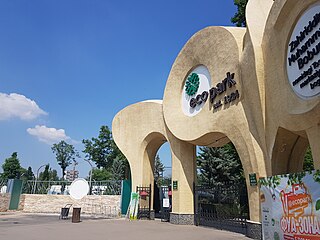
Tourism represents a substantial and fast-growing sector of the economy of Uzbekistan. The government of Uzbekistan under President Shavkat Mirziyoyev has invested heavily in developing tourism as a high-growth potential industry, resulting in an increase in international arrivals from approximately 1 million in 2016 to 7 million in 2023.
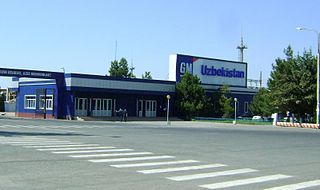
Asaka is a city and the administrative center of Asaka District in eastern Uzbekistan, located in the southeastern edge of the Fergana Valley near Uzbekistan's border with Kyrgyzstan.

The Tashkent Metro is the rapid transit system serving the city of Tashkent, the capital of Uzbekistan. It was the seventh metro to be built in the former USSR, opening in 1977, and the first metro in Central Asia. Each station is designed around a particular theme, often reflected in the station name.
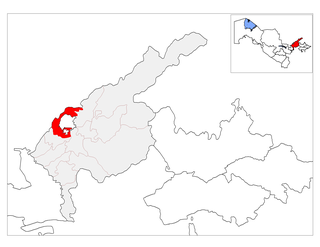
Zangiota is a district of Tashkent Region in Uzbekistan. The capital lies at the town Eshonguzar. It has an area of 210 km2 (81 sq mi) and it had 195,400 inhabitants in 2021. Between 2010 and 2017, the territory of Tashkent District was part of Zangiota District.

The Museum of Arts of Uzbekistan is the largest national art museum in Tashkent, Republic of Uzbekistan. Its permanent collection contains more than several thousands works, divided among four curatorial departments. The museum was established in 1918 as a "Museum of People University" and renamed as the "Central Arts Museum" later. It was named as the "Tashkent Art Museum" in 1924 and finally the "Museum of Arts of Uzbekistan" in 1935.

Shota Rustaveli street is one of the central streets of Tashkent, Uzbekistan. The length of the street is approximately estimated to be 6.5 kilometers long and during Middle Age times, the street was the linking road between Tashkent and Samarkand. In the past, "Shota Rustaveli" street was called "Zangiota street" and "Summer house street"(Uzbek: Dala hovli).

Majid Qodiri (Kadyrov) ('Abd-ul-Majid-khan, son of 'Abd-ul-Qodir-khan (Kadyrov) (Uzbek: Abdul-Majidxon Qori Abdul-Qodirxon Qori o'g'li), (Uzbek: Majid Qodiriy,Мажид Қодирий) (Arabic: مجید قَارِئ قادری),(May 2, 1886, Qori-Yoghdi Mahalla, Sheyhantahur daha, Tashkent — October 4, 1938, Tashkent) was an Uzbek literary scholar, public figure, and publicist who was the author of the first Uzbek tutorials and textbooks of literature, history, and arithmethi. He was one of the founders of Jadidism in Turkestan.
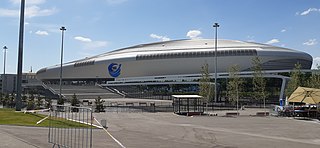
The Humo Arena, also known as Ice Dome Tashkent or Humo Ice Dome, is a multifunctional indoor arena located in Tashkent, Uzbekistan. Humo Arena is the biggest hockey arena in Central Asia with a capacity of 12,500 and the second after the Belarusian Minsk Arena in the CIS.
Abdusalom Abdumavlonovich Azizov is an Uzbek military leader who was the Minister of Defence of Uzbekistan from 4 September 2017 to 11 February 2019. He now serves as head of the State Security Service.

Ak Saray Presidential Palace meaning the White Palace in English is public museum which was the official workplace of Uzbek President Islam Karimov. Under former president Karimov, who served from 1991-2016, the palace was the seat of the executive branch in the country. After his death in 2016, the administration of Shavkat Mirziyoyev relocated the official workplace to Kuksaroy Presidential Palace in northeastern Tashkent. The area of the palace is 5460 square meters. There is a reception hall in the palace where guests will be received. There is also a meeting hall, as well as a recreational hall.
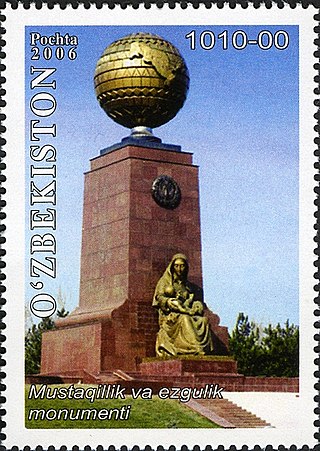
The Monument to the Independence of Uzbekistan is a Tashkent monument made in honor of the independence of Uzbekistan. At the top of the monument is a metal sphere ornamented with an ornamental pattern, on which a map of Uzbekistan is depicted. Wreath-laying ceremonies are regularly held at the pedestal of the monument on national holidays and state visits.

Kuksaroy Presidential Palace, meaning the Blue Palace in English, is currently the official workplace of the President of Uzbekistan. It is located in the northeastern Mirzo Ulugbek District of Tashkent.
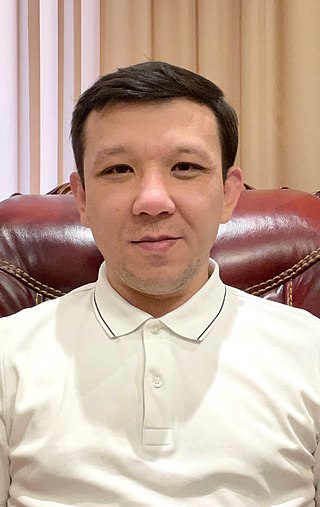
Diyor Mahkamov is an Uzbek pop singer and actor. The singer was awarded "Badge of Uzbekistan", 30th anniversary of independence of Uzbekistan.

Usta Shirin Murodov was a Soviet Uzbek master artist – a painter, pottery craftsman, and folklorist. He was an honorary member of the Academy of Sciences of Uzbekistan SSR (1943) and a distinguished artist recognized for his contributions to the art in the Uzbek SSR (1943). He was also the recipient of the Stalin Prize in the first class (1948).
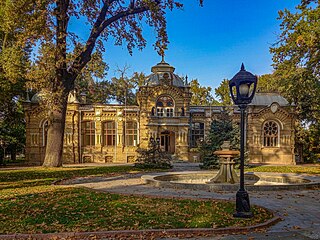
The Romanov Palace, located in Tashkent, Uzbekistan, was built in 1891 according to the design of architect V.S Geintselman and A.L. Benois for Grand Duke Nikolai Konstantinovich, who had been exiled to the outskirts of the empire in the Turkestan region. The left wing of the palace housed the apartments of the Grand Duke, and the right-wing housed the apartments of his wife. Currently, the building is used as a reception house for the Ministry of Foreign Affairs of Uzbekistan. Near the entrance to the palace grounds, there used to be the Iosifo-Georgievskaya Church until 1995.
Sergo Sutyagin was an Uzbek architect. He was a laureate of the State Prize of the Uzbek SSR named after Hamza in 1966, as well as the State Prize of the Republic of Uzbekistan in the field of literature, art, and architecture named after Alisher Navoi, along with other awards.
Otabek Umarov is an Uzbek civil servant and sports official.


















